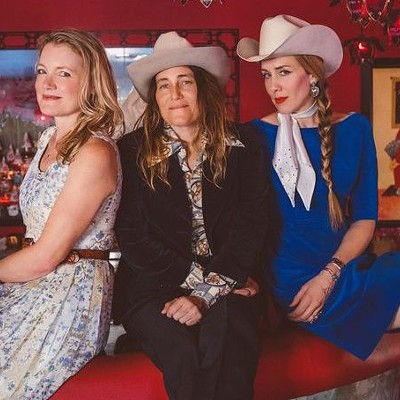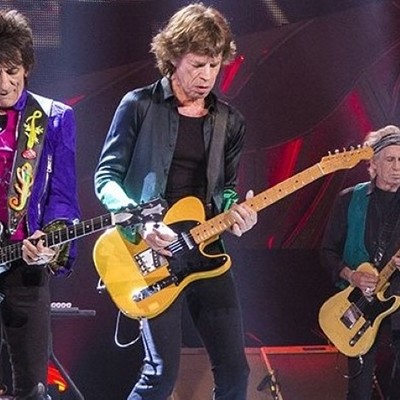They came to prominence in the 1960s, but music fans at the time couldn’t be faulted for thinking they were from the 1860s. With bushy beards and facial hair, string ties and coats, and posed among the woodsy backdrop of their Woodstock, New York, stomping grounds, The Band seemed like…well…a band out of time.
Perhaps no other act incorporated so many styles and genres of music — and old-sounding music at that — into their repertoire as Robbie Robertson, Levon Helm, Rick Danko, Richard Manuel and Garth Hudson did, and with such little obvious effort. After all, they were called “The Band” simply because, well…that’s how people referred to them.
There’ve been a flurry of recent releases surrounding both guitarist Robertson and his former group, all of them Rock and Roll Hall of Fame members. At the leading edge is Robertson’s sprawling memoir, Testimony: A Memoir (Crown Archetype, 512 pp., $30). And testimony he does give in this magical, rambling tale stuffed to the brim with stories and anecdotes, and written with a keen sense of detail and observation.
From a colorful Canadian youth to wild times learning his craft on the road with Ronnie Hawkins and the future Band (then known as The Hawks) to their extensive collaborations with Bob Dylan, Robertson is a real storyteller here, recalling encounters with a who’s who of music, including Michael Bloomfield, Sonny Boy Williamson, Paul Butterfield, Carly Simon, Eric Clapton, Van Morrison, George Harrison and even Tiny Tim.
But the best remembrances are of his and the Band’s extensive collaborations with Dylan, which will delight the Bard of Hibbing’s many admirers. There’s raw head-scratching moments for Robertson as the group gets booed nightly on the 1965/66 world tour when Dylan “goes electric,” but they still soldiered on.
The nightly negative reception is so nerve-wracking for the group's drummer, Levon Helm, that he temporarily l
Robertson also recounts how the men created the near-mythical “Basement Tapes” in that “Big Pink” house in Woodstock. Originally intended as a way to sell Dylan’s songs to other performers as he slipped away from the public eye, the result ended up almost accidentally birthing Americana music of what Greil Marcus called “the old, weird America.”
In fact, the stories of Robertson’s adventures with Dylan come fast and furious. He’s there with Dylan when they bring Andy Warhol to meet Salvador Dalí, or in the hotel room when the four Beatles come calling to play Dylan an acetate of their then-unreleased album Revolver. In fact, Testimony is three-fifths over before The Band even step into the studio to record their debut record.
Of particular interest to followers of the Band here is how Robertson would characterize his relationship with Levon Helm. Though they were once the closest of friends from their days as teens in the Hawks, things began to unravel as Helm, Manuel and Danko sank harder into drug use (not that Robertson was an angel, he admits) and lethargy.
And in the decades since the group's dissolution, Helm was a bitter and vocal critic of Robertson for what he saw as hogging of song credits (including the Band's revenue-generating greatest hits). While not denying that Robertson was the band's primary songwriter, Helm felt that the rest of the Band's contributions were minimized.
The pair never reconciled. And while Robertson visited the dying Helm just prior to his 2012 death, he doesn't write about it here, ending his narrative just as the final touches are being put on The Last Waltz. Helm told his own version of events in his book This
Still, it was essentially Robertson's decision to break up the group, a likely combination of his own newfound ambitions and not seeing his bandmates fall apart. "Levon had been my dearest friend in the world. My teacher. The closest thing I ever had to a brother," he writes. "We had seen it all together and survived the world's madness. But not our own."
Don't be mistaken. Robbie Robertson has an ego, and
Robertson has released a CD audio companion to the book, also called Testimony (Universal). It’s a solid 18-track single-disc compilation that includes many of the Band’s biggest hits in live or studio format (“The Night They Drove Old Dixie Down,” “The Weight,” “Life is a Carnival”), and deeper cuts along with collaborations with Ronnie Hawkins (“Come Love”) and Bob Dylan (“Rainy Day Women #12 & 35”). There’s also Robertson's solo material, including the very Leonard Cohen-
The Band made one of rock’s splashiest farewells — and one of the greatest concert films ever in the process — with their star-studded, elegant gathering on Thanksgiving 1976, immortalized in Martin Scorsese's The Last Waltz concert documentary.
And while the film and the soundtrack itself
Acting as the house band, the Band performs their own material as well as backing a series of influences and collaborators, including Ronnie Hawkins, Muddy Waters, Dr. John and Joni Mitchell to Eric Clapton, Neil Young, Van Morrison and Bob Dylan, as well as the Staple Singers and Emmylou Harris. We’ll even forgive the out-of-his-wheelhouse Neil Diamond, whose record Robertson was producing at the time.
Even those familiar with other editions will find jewels here. And, of course, the film itself can never be watched too many times.
Oh, and don't forget, in addition to a five-hour
Finally, t
There’s much ink spilled about both the musical styles and the performers that influenced of the group (and there are many in both categories), along with chapters on key
And Aaron – a musician himself – also details what makes The Band “unique” among acts of the era (or any era), and includes detailed information on the player’s pre-Band bands, especially their time with Ronnie Hawkins. He also delves into members’ post-Last Waltz careers, and their influence on contemporary acts like the Jayhawks, Wilco, and Mumford and Sons. As mentioned, it’s for the listener who wants to know more.






